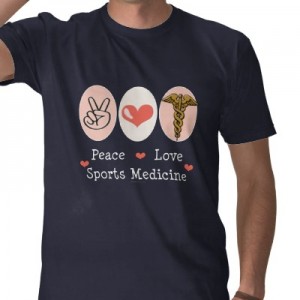Article by Fred Matheny
Andy Pruitt’s name has become synonymous with sports medicine for cycling. As director of the CU Sports Medicine & Performance Center in Boulder, CO, Pruitt has made a career out of treating world-class riders such as Lance Armstrong and George Hincapie. In 1996, Pruitt served as chief medical officer for the U.S. Olympic Cycling Team.
Pruitt is an elite athlete in his own right, too. He lost his lower leg in a hunting accident at age 14 but still wrestled and participated in track, eventually winning 12 high school varsity letters. When he took up cycling he earned a category 2 ranking in able-bodied racing and was twice a world champion in disabled cycling.
But the Boulder Center isn’t reserved for elite clients. Pruitt wanted to develop a sports medicine center equal to any university or Olympic training facility but available to recreational athletes of any age. That’s what he has accomplished
Here’s a sampling of Pruitt’s sports medicine wisdom.
- Floating Pedals. “In the late eighties, the cycling injury rate soared due to step-in pedals. The old, slotted cleats and soft leather cycling shoes allowed feet quite a bit of movement, but the newer step-in cleats and more rigid shoes with a heel counter locked feet in one position. Now the injury rate has gone way down due to cleats that float, allowing each foot to find its best position on the pedal.”
- Bike Fit. “I’ve done thousands of bike fits. Much is made of saddle height and saddle fore-and-aft position. It’s true—they’re important. But the reach to the handlebar along with the height difference between the bar and the saddle are the two most personal aspects of bike fit. If they aren’t right, you’ll be miserable. We’re seeing more riders who want to raise their handlebars for increased comfort.”
- Chondromalacia. “When cyclists have chondromalacia (pain under the kneecap) it’s not good medical advice to keep them off the bike. They need to ride. The knee likes motion and riders want to be on their bikes. So we check saddle height and other bike fit factors like cleat position and let them ride. Most chondromalacia sufferers can ride at some level no matter how severe the degeneration. I’ve seen riders with a back of the kneecap that was full of gouges. It looked like one of those rural road signs peppered with bullet holes. But they can still ride without pain.”
- Patellar Tendinitis. “Strain of the tendons around the knee often happens in the early season when riders get caught out in the cold and wind and decide to get home fast. They push a big gear, maybe they aren’t wearing leg warmers, and the next morning they have an ominous twinge. The problem is that in the early season, your muscles can bear a lot more strain than your connective tissue.”
- Saddle Position. “Greg LeMond has extremely long femurs. His kneecaps are slightly above his ankles. So for him a bike with a slack seat tube angle, a long top tube, and the saddle jammed all the way back is appropriate. But most people aren’t built that way. For example, Ron Kiefel moved his saddle back when a famous pro he admired told him he’d be faster if he did. Ron didn’t get faster, instead he got severe back pain and missed several weeks of racing. The moral of this story: Let your femur length determine your saddle position, not your hero.” Happy Riding!
Leave a Reply